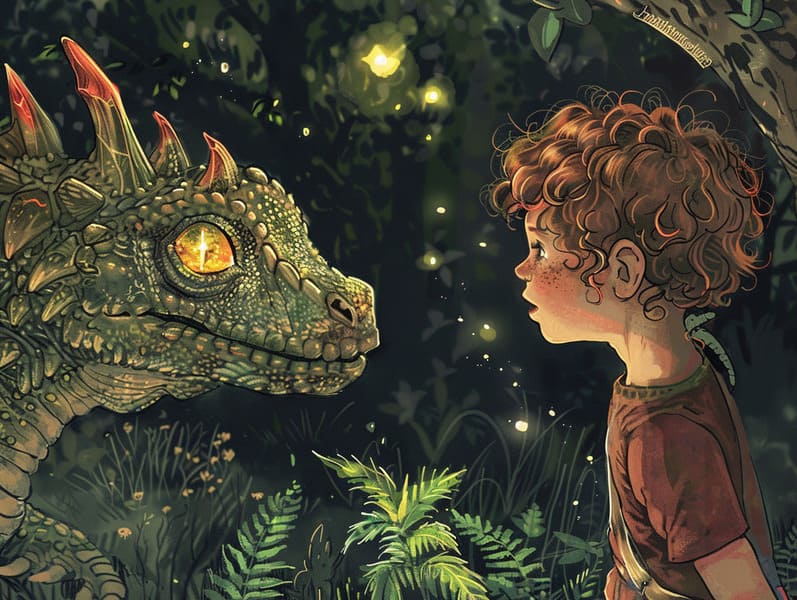
Best fairy tales have deep roots. These tales have been whispered from one generation to the next millennia before they were ever put on paper. They developed from a variety of civilizations, including Asian traditions. They were initially conveyed among mature audiences, often carrying themes and messages mirroring the societal norms and beliefs of the time.
The Brothers Grimm, Jacob and Wilhelm Grimm, were among the first to gather and publish many of these beloved narratives. Their collection, "Grimm's Fairy Stories," included tales like "Cinderella," "The Bread Crumb Trail," and "Little Snow White," which have since become cornerstones in the world of children's fairy tales. Similarly, the Danish author's delightful stories, such as "The Little Mermaid," and "The Duckling's Story," have gained the love worldwide, securing their place in the pantheon of iconic fairy tales.
Even though they are old, traditional fairy tales remain as meaningful as ever, especially as bedtime stories for kids. These charming stories are now available in multiple formats, including richly illustrated books, fantastical animations, and web-based fairy tales.
Their ongoing significance can be credited to several charming aspects:
Important Morals: Old fairy tales often provide important moral lessons. Tales like "The Tale of the Boy Who Cried Wolf" teach the value of sincerity, while "The Tale of the Tortoise and the Hare" point out the values of perseverance and unpretentiousness. These stories offer kids clear distinctions between right and wrong, guiding their moral compass in a kind yet profound way.
Warmth and Understanding: Classic fairy tales frequently showcase protagonists facing challenges and problems, urging children to identify with their struggles and celebrate their triumphs. For instance, "Beauty and Her Beast" reveals the merit of appreciating inner worth to comprehend the true essence of a individual, cultivating warmth and appreciation.
Cultural Recognition: Many timeless fairy tales are infused with the cultural contexts from which they were born. Delving into these fairy tales can provide captivating looks into different beliefs, strengthening a sense of international awareness and recognition.
Fantasy and Imagination: The fantastical elements in ancient fairy tales—enchanted lands—awaken children’s creative minds. These tales move readers to supernatural realms, invigorating innovative dreams and a sense of wonder that stays a lifetime.
Classic fairy tales are not only entrancing but also didactic. They serve as charming tools in cultivating various brain and heart skills in the young. When classic fairy tales are spoken, they strengthen language acquisition by showing new language items and sophisticated sentence structures. This practice also fosters auditory perception and mental focus, as young ones pay close attention, expectant to see what happens next.
Furthermore, deliberating the themes and characters of timeless fairy tales can promote evaluative skills and problem-solving abilities. Little ones are guided to find patterns, anticipate outcomes, and make sense of cause and effect. These reflections also benefit young readers speak out their thoughts and feelings, fostering their emotional intelligence.
In today’s electronic age, the proliferation of web-based fairy tales has made these tales more accessible than ever. Websites and programs present extensive collections of bedtime fairy tales that can be viewed or listened to anytime, anywhere. Fairy tales read out loud are particularly in demand, sharing an delightful method for children to engage with these alluring stories. Narrated books and read-out-loud videos lead characters and settings to life, often complemented by magical harmonies and music that raise the tale journey.
The persistent attraction of traditional fairy tales lies in their ability to modify to modern times while maintaining their underlying messages. Contemporary updates of these tales often show more representative figures and modern settings, making them pertinent to today’s audience. However, the core values of bravery, sympathy, and integrity remain unchanged, continuing to strike a chord with young listeners of all ages.
Timeless fairy tales also offer a sense of reassurance and recognition. They put forth a systematic narrative with a distinct beginning, middle, and end, often wrapping up with the culmination of conflicts and the triumph of honesty over deceit. This certainty can be relieving for the young, allowing a sense of firmness in an fluid world.
Ancient fairy tales continue this site to bewitch and guide new generations, maintaining their charm and significance in modern society. As kids' bedtime tales, they distribute a perfect blend of delight and instruction, advancing moral values, empathy, and creativity. The accessibility of free fairy tales online and the favor of fairy tales read out loud promise that these traditional narratives remain reachable to new generations.
By maintaining and relating these stories, we continue to pay tribute to the rich tapestry of tales and cultural heritage. Whether you are seeing a vibrantly illustrated book, delving into a internet collection, or listening through an voice book, the mystique of ancient fairy tales is always within reach. These fairy tales emphasize of the unending impact of narratives and its ability to unite us across eras and regions.
Regardless if you are reading a richly illustrated book, delving into a web collection, or hearing an audio story, the grace of children's fairy tales is always within reach.
These tales remind us of the unfading ability of storytelling and its ability to connect us across time and space, creating a bond that delights and instructs alike.
Comments on “Tracing the Heritage of Children's Fairy Tales and the Unchanging Delight.”